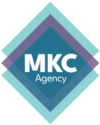Let’s be real for a second: most MSPs believe that the more they talk, the more they can convince prospects to sign on the dotted line. They load their sales pitches with every tech feature, every acronym, and every buzzword under the sun, thinking the client will be wowed. But guess what? They’re not.
Here’s the truth: talking less and listening more is the real secret to closing more deals. Welcome to the MSP messaging revolution—where listening to your clients, understanding their needs, and reflecting their own language back at them is your most powerful tool.
Let’s dive into how this works.
The Problem: Why Most MSPs Are Talking Too Much
The old-school sales pitch is all about information overload. Most MSPs walk into a meeting thinking they have to dazzle prospects with the sheer number of features and services they offer. The result? They end up talking way too much and listening too little.
It’s time to flip the script. Clients don’t want to hear you drone on about your services. They want you to understand their challenges. In fact, research from Forrester shows that modern B2B buyers—especially Millennials—are more interested in guiding their own sales journey. They want conversations, not monologues.
“Most MSPs think they need to fill every second with talking, but the truth is, your clients want you to hear their needs first.” – [Sales Expert]
The Listening Advantage: How Client-Centric Conversations Drive Sales
Here’s the thing—when clients feel heard, they’re more likely to buy. Sales are about connection. If you’re talking too much, you’re not connecting.
When you start by listening, you gain valuable insights into your client’s world. You learn about their frustrations, their goals, and most importantly, what they actually need from you. According to Salesforce, 79% of buyers expect companies to not only understand their needs but also deliver personalized solutions.
That’s why listening is your secret weapon. It allows you to frame your message around solving real problems. And let’s be honest—clients don’t care about your tool stack; they care about how you’re going to make their lives easier.
“When you let your clients do the talking, you gain a deeper understanding of their needs—and they trust you more.”
The Art of Listening: How to Turn Client Input into Messaging Gold
Listening isn’t just nodding along while the client talks. It’s active. It’s about asking the right questions and making sure you fully understand what the client is telling you before you respond.
Active Listening Techniques for MSPs
- Ask Open-Ended Questions: Encourage your client to talk about their needs. Questions like, “What’s your biggest frustration with your current IT setup?” or “What are you hoping to achieve with our services?” give you a lot of insight into their pain points.
- Summarize What You’ve Heard: Once they’ve shared their concerns, repeat back what you’ve understood. This ensures you’re both on the same page and shows that you’re paying attention.
- Don’t Interrupt: Resist the urge to jump in with solutions before they’ve finished talking. Let them fully explain their situation.
“Listening allows you to adapt your messaging on the fly, so you can offer tailored solutions instead of generic pitches.”
Client-Led Messaging: Let Them Do the Talking, You Do the Translating
Once you’ve listened, it’s time to work some magic. The best way to connect with a client is to use their own language. When you reflect their concerns, frustrations, and goals back at them in your response, they feel understood—and understood clients become loyal clients.
Why It Works:
- Clients trust you more when they hear their own words reflected back at them. It shows that you get it, that you’re not just throwing out a one-size-fits-all solution.
- Tailoring your messaging using client-specific language makes your pitch feel personalized and relevant, which leads to quicker, easier decisions.
According to Harvard Business Review, mirroring language in sales helps to create trust and rapport, making clients feel like you’re speaking directly to them—not at them.
The Listening Payoff: Real-World Benefits of Client-Led Conversations
Let’s talk results.
Case Study: A Mid-Sized MSP Boosts Sales by Shifting to Client-Centric Conversations
One MSP we worked with was struggling with long-winded, overly technical sales presentations. They had the knowledge and the skills, but they weren’t connecting with clients. After shifting to a listening-first approach, they saw a 25% increase in closed deals.
- Before: Their sales pitch was dominated by tech specs and long explanations about their services.
- After: They started letting the clients lead the conversation, asking about their problems and responding with targeted, simplified solutions. The results? Faster decision-making and more trust in their ability to deliver.
5 Steps to Shift to a Listening-Centered Sales Approach
Ready to start listening and stop talking? Here’s how to begin:
- Ask Open-Ended Questions
Start by asking clients about their pain points and goals, rather than leading with your services. You’ll uncover valuable insights. - Listen Actively
Pay attention. Take notes. Make sure you don’t interrupt while they explain their needs. - Validate What They Say
Summarize their concerns to confirm you understand. This not only builds trust but also ensures you’re addressing the right problems. - Use Their Language
When you respond, mirror the client’s own words. This makes your solution feel tailored to their specific situation. - Follow Up Based on Their Concerns
Your follow-up emails, proposals, and meetings should all reflect the conversation you had, rather than a generic sales pitch.
Listening Is Your Secret Weapon
Here’s the bottom line: Stop talking. Start listening. It’s not just polite—it’s the most effective way to sell. By allowing your clients to lead the conversation, you build trust, offer better solutions, and, ultimately, close more deals.
Want to learn more about how to transform your sales strategy by listening to your clients? Download our messaging guide to implement client-centric conversations and boost your MSP’s success.

